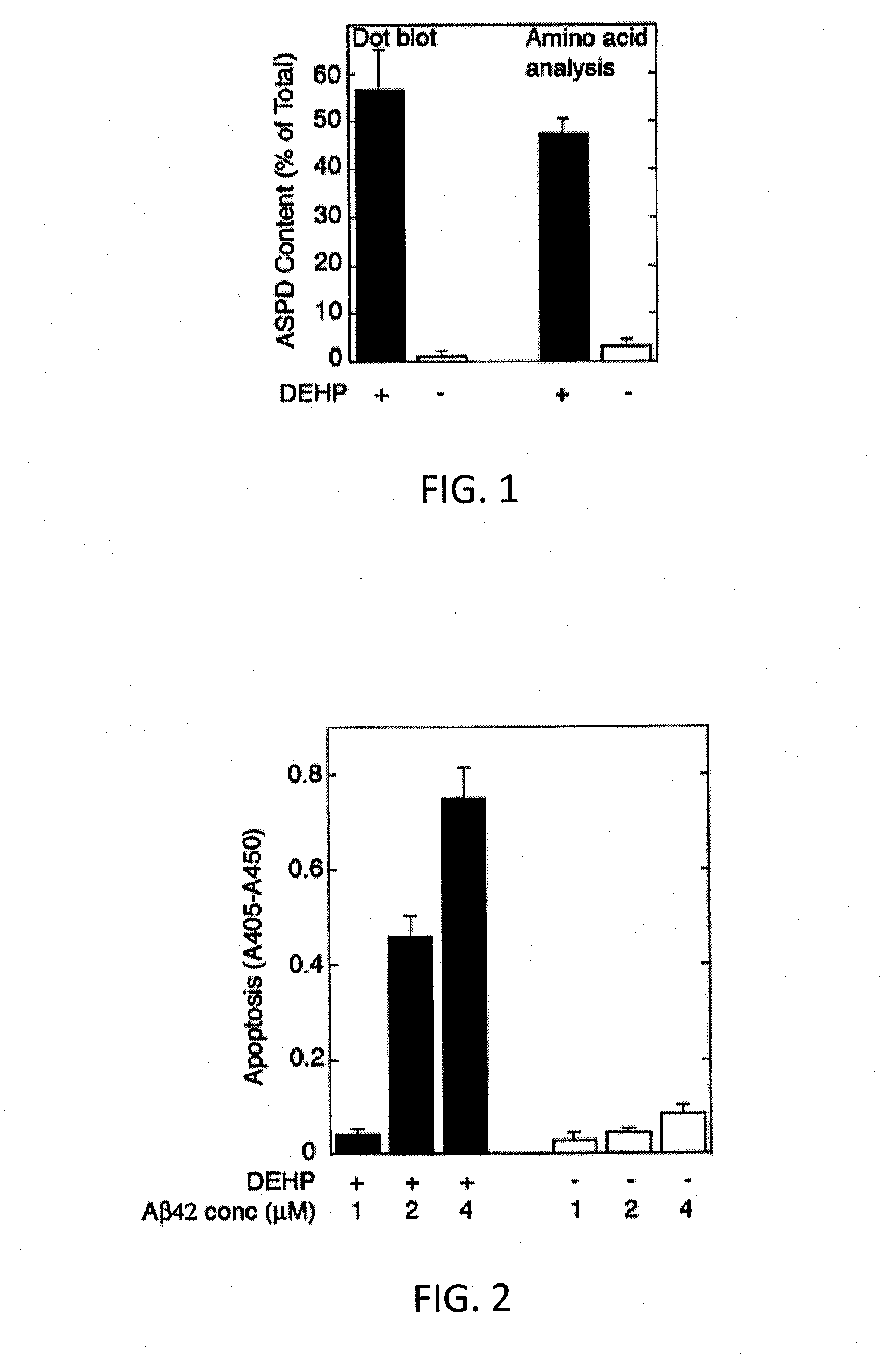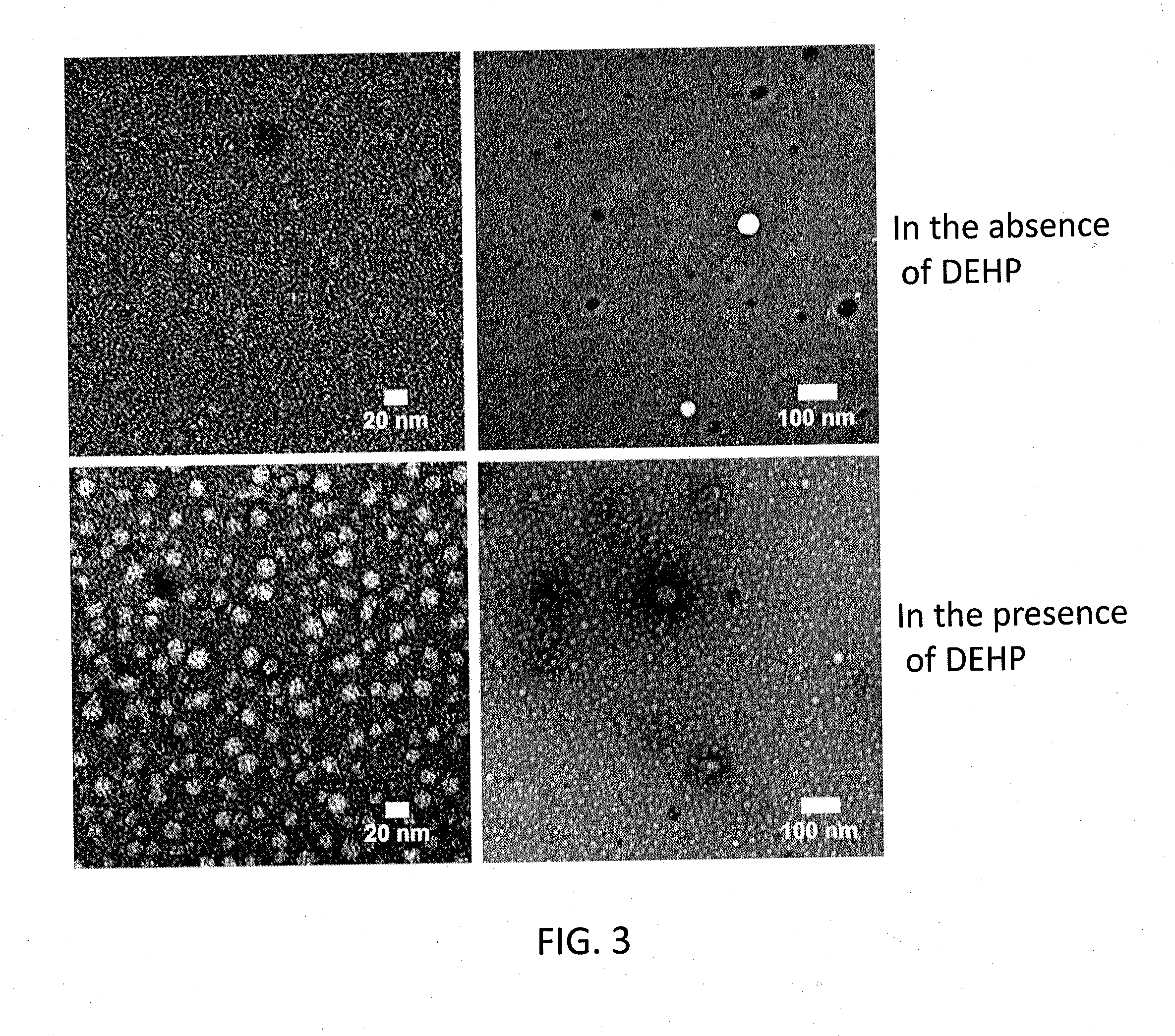Method for producing synthetic amylospheroid
a technology of synthetic amylospheroid and amylospheroid, which is applied in the field can solve the problems that neither dimers nor a dodecamers induce neuronal death, and achieve the effect of improving the efficiency of producing synthetic amylospheroid
- Summary
- Abstract
- Description
- Claims
- Application Information
AI Technical Summary
Benefits of technology
Problems solved by technology
Method used
Image
Examples
example 1
[0053]To an Aβ42 starting material in a lyophilized state (Ca. 50 nmol / tube) prepared under the following conditions, 10 μL of a DMSO solution containing 65 mM bis(2-ethylhexyl)phthalate (DEHP) prepared as below was added for dissolving the starting material, whereby a 5 mM Aβ solution was obtained. To the 5 mM Aβ solution, 990 μL of an L-glutamine- and phenol red-free F12 buffer (manufactured by Kohjin Bio Co., Ltd.) was added, whereby a 50 μM Aβ solution was obtained. The 50 μM Aβ solution was rotationally agitated at 4° C. for 14 hours using a rotator. Thus, synthetic ASPD was formed. From the solution containing formed synthetic ASPD, synthetic ASPD was purified under the following conditions. The formation efficiency of synthetic ASPD of the purified synthetic ASPD calculated under the following conditions was 57% (in terms of monomer). Incidentally, the formation of synthetic ASPD was confirmed by electron microscope observation, dot blot using anti-ASPD antibodies, and amino ...
examples 3-6
[0068]Synthetic ASPDs of Examples 3-6 were produced from Aβ42 peptides in the same manner as in Example 1, except that the 65 mM DEHP / DMSO solutions of Examples 3-6 were adjusted to have the DEHP concentration of 13, 26, 51, and 102 mM, respectively. The ASPD formation efficiency measurement and the cytotoxicity test were performed in the same manner as in Example 1. Consequently, the formation efficiencies of the synthetic ASPDs of Examples 3-6 were 67%, 61%, 38%, and 28% (in terms of monomer), respectively. FIG. 4 shows exemplary results of the ASPD formation efficiency measurement and the cytotoxicity test in Comparative Example 1 and Examples 3-6 (the DEHP concentrations were 0, 13, 26, 51 and 102 mM, respectively). As shown in FIG. 4, the ASPD formation efficiency and cytotoxicity increased depending on the concentration of DEHP used in the formation of ASPD.
PUM
 Login to View More
Login to View More Abstract
Description
Claims
Application Information
 Login to View More
Login to View More - R&D
- Intellectual Property
- Life Sciences
- Materials
- Tech Scout
- Unparalleled Data Quality
- Higher Quality Content
- 60% Fewer Hallucinations
Browse by: Latest US Patents, China's latest patents, Technical Efficacy Thesaurus, Application Domain, Technology Topic, Popular Technical Reports.
© 2025 PatSnap. All rights reserved.Legal|Privacy policy|Modern Slavery Act Transparency Statement|Sitemap|About US| Contact US: help@patsnap.com



